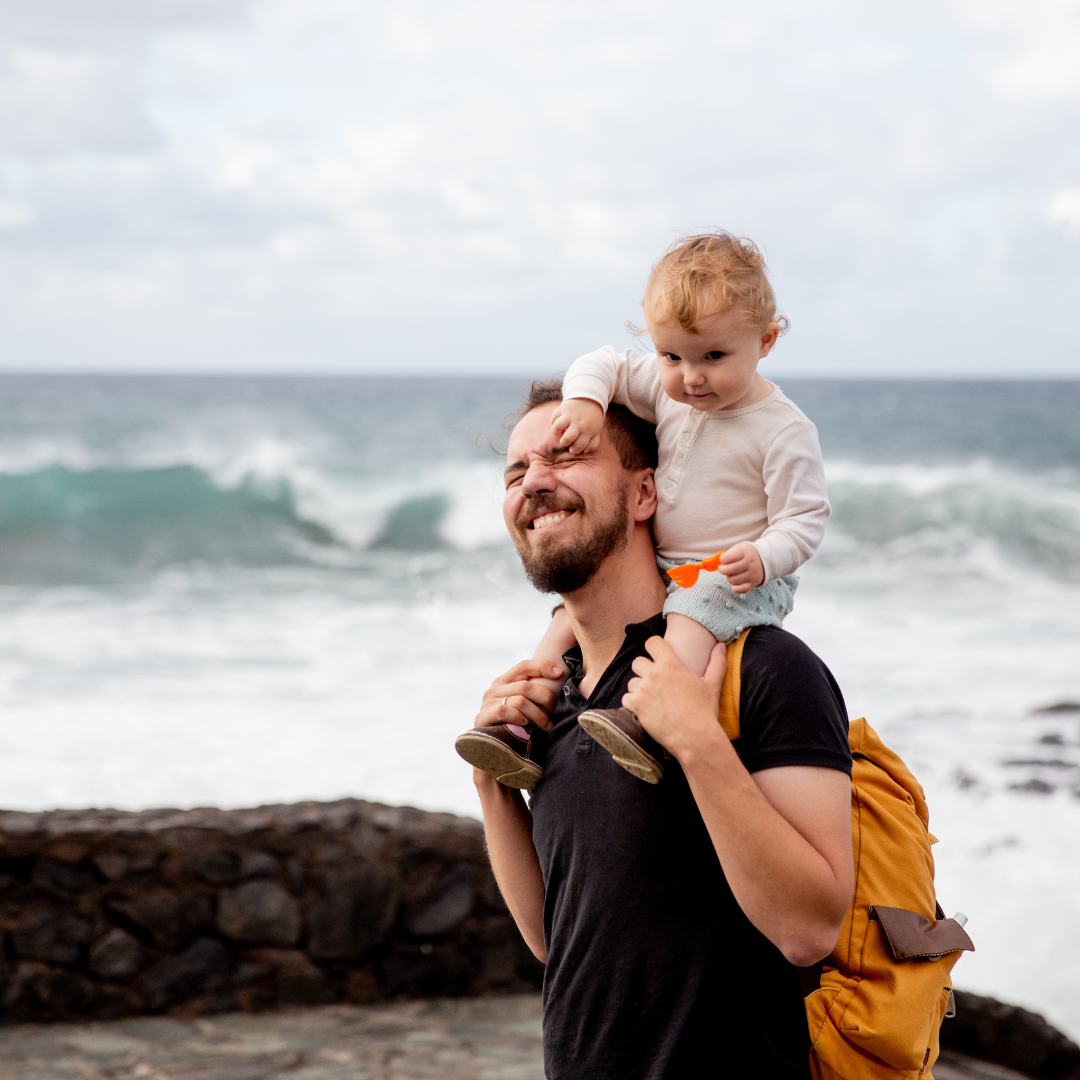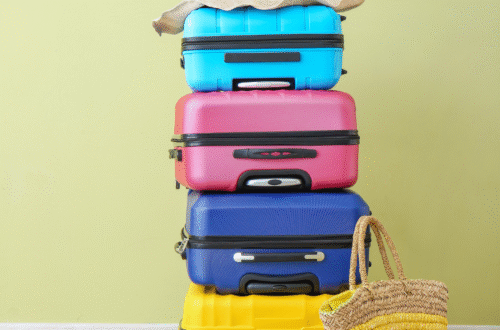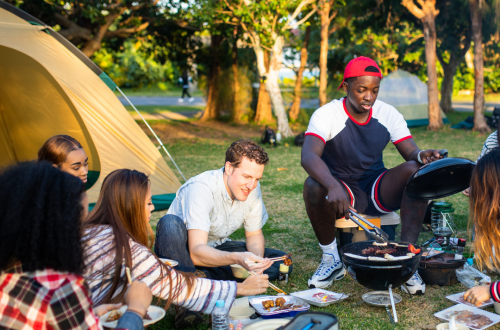
How to Travel with Kids Without Stress: Essential Tips for a Smooth Family Journey
Traveling with kids can often feel like a daunting task. Parents frequently worry about keeping their children entertained and calm during long journeys. Planning ahead with structured itineraries and flexible activities can significantly reduce stress for families on the go.
Incorporating engaging games and snacks can keep children occupied during travel. Choosing family-friendly destinations with activities for all ages also enhances the experience. Understanding the needs of children and balancing them with adult preferences is key to a more enjoyable family trip.
Effective preparation can make all the difference. Parents who adopt a proactive approach tend to experience smoother journeys, transforming what could be a stressful venture into a memorable adventure for the entire family.
Pre-Travel Planning for a Smooth Journey
Effective pre-travel planning can significantly reduce stress during family vacations. Key considerations include selecting suitable destinations, booking appropriate accommodations, and designing an itinerary that is enjoyable for children.
Choosing Kid-Friendly Destinations
Selecting the right destination is crucial for family travel. Look for places that offer activities tailored for children, such as museums with interactive exhibits, theme parks, or natural settings suitable for exploration.
Factors to consider:
- Safety: Ensure the area is safe for families.
- Accessibility: Look for locations with family-friendly transportation options.
- Attractions: Identify local attractions that cater to children’s interests.
Popular kid-friendly destinations often include cities with zoos or aquariums, scenic national parks, and beach resorts. Research beforehand to know what special features or events might be available during travel dates.
Booking Family-Oriented Accommodations
Finding family-oriented accommodations can enhance the travel experience. Options like vacation rentals, family suites, or hotels that provide amenities for children can help make the stay more comfortable.
Key features to look for:
- Kitchen Facilities: Accommodations with kitchenettes allow families to prepare meals.
- Amenities: Pools, game rooms, or playgrounds can keep children entertained.
- Proximity to Attractions: Staying near major attractions can minimize travel time and reduce stress.
Reading reviews from other families can provide insight into what to expect at various locations. Consider booking early, as family-friendly accommodations can be in high demand during peak seasons.
Creating an Itinerary with Children in Mind
Designing an itinerary that incorporates children’s preferences and attention spans is essential for a stress-free trip. Balance activities between sightseeing and downtime, allowing for rest periods.
Tips for itinerary creation:
- Short Activities: Plan activities that last no longer than 1-2 hours.
- Include Favorites: Make time for attractions children are excited about, such as amusement parks or nature hikes.
- Flexibility: Keep the schedule adaptable to accommodate mood changes or unexpected events.
Including shared experiences in the itinerary, such as cooking classes or family-friendly tours, can foster bonding while exploring new environments. This approach can transform travel from a challenge into an enjoyable adventure.
Packing Strategies and Essential Gear
Efficient packing and selecting the right gear can greatly ease the travel experience with children. These strategies focus on optimizing space and ensuring essential items are readily available.
Optimizing Packing with Packing Cubes
Packing cubes are a highly effective tool for organizing travel essentials. They help create designated spaces for clothing, accessories, and other items, making it easier to find what is needed.
Benefits include:
- Organization: Each family member can have separate cubes, reducing chaos.
- Space-saving: Packing cubes compress items, allowing for maximum use of suitcase space.
- Accessibility: Quick access to specific items reduces the hassle of rummaging through bags.
Consider labeling each cube with its contents for even easier identification. This will streamline packing and unpacking, especially during hurried moments.
Essentials for Babies and Toddlers
When traveling with young children, having the right essentials is crucial. Items should cater to their needs to ensure a smoother journey.
Key essentials include:
- Diapers and Wipes: A sufficient supply is necessary, plus a waterproof bag for soiled items.
- Portable Crib or Pack-n-Play: Provides a safe sleeping space in unfamiliar environments.
- Snacks and Drinks: Pack a variety of healthy snacks and spill-proof cups to manage hunger and thirst throughout the trip.
Make a checklist of essentials before departing to avoid forgetting critical items. This will enhance convenience and peace of mind.
Choosing the Best Lightweight Stroller
A lightweight stroller can significantly ease movement during travel. It should be easy to fold, carry, and maneuver.
Features to consider:
- Weight: Models should ideally weigh under 15 pounds for ease of transport.
- Foldability: Look for a one-hand fold option to simplify boarding and disembarking.
- Storage: Adequate storage under the seat for bags and supplies is essential.
Testing a stroller before purchase can confirm ease of use. Consider models that accommodate infants and toddlers for extended usability.
Assembling a Family First Aid Kit
A well-stocked first aid kit is vital during family travels. It ensures preparedness for minor injuries and illnesses that may arise.
Important items include:
- Adhesive Bandages: Various sizes for cuts and scrapes.
- Antiseptic Wipes: For cleaning wounds to prevent infection.
- Children’s Pain Reliever: Bring age-appropriate medication for fevers or discomfort.
- Thermometer: A must-have for monitoring health.
Include any personal medication required for family members to ensure comprehensive coverage. Regularly check the kit to replenish supplies before travel.
Ensuring Stress-Free Travel Days
Traveling with kids can be enjoyable with proper planning and organization. Attention to managing transitions, keeping children entertained, and addressing challenges will create a smoother travel experience for families.
Managing Transitions and Airports Smoothly
Transitions, such as moving from home to the airport, can cause stress for children. A structured schedule helps, with plenty of time allocated for each step. Arriving early at the airport allows for unexpected delays, and it gives kids time to adjust to the new environment.
Prepare children by explaining what to expect at each stage. Use visual cues or apps that illustrate the process, such as boarding a plane. Practice airport procedures at home to familiarize them, making the experience less intimidating.
Consider packing essentials in an easily accessible bag. Include travel documents, snacks, and comfort items. A waiting game can also help ease transitions and encourage kids to play games or explore safe areas of the terminal.
Keeping Kids Entertained During Transit
Keeping children engaged during transit transforms travel from stressful to enjoyable. Pack a variety of activities like coloring books, portable games, or sticker sets. Interactive games can spark teamwork and anticipation.
Consider digital entertainment options. Download your favorite shows, movies, or educational apps on a tablet or smartphone. Bring headphones to allow children to watch without disturbing others.
Make travel time interactive by incorporating games such as “I Spy” or “20 Questions.” Engaging in conversations can also keep children occupied. Discuss the destination or involve them in planning by asking what they would like to explore.
Handling Unexpected Challenges Calmly
Unexpected changes are part of traveling. Remaining calm and adaptable sets a positive tone for the entire family. When delays occur, acknowledge the situation and reassure children that it’s okay.
Have a backup plan for meals or snacks in case of long waits at the airport. Simple backup distractions, like surprise treats or games, can alleviate overstimulated emotions.
Teach kids essential problem-solving skills for minor challenges. Practicing how to handle snags will build their confidence. For example, if luggage is lost, discuss how the family will cope together.
Staying proactive about challenges empowers both parents and children for a stress-free travel experience.
Building Positive Family Memories
Creating lasting memories during family trips can enhance connections among family members. Engaging in shared experiences and capturing special moments ensures each trip becomes memorable.
Encouraging Shared Experiences
Participating in activities together strengthens family bonds. Choosing family-friendly adventures allows everyone to contribute to the fun.
- Plan Activities Together: Involve children in the planning process. Let them choose attractions or experiences that interest them.
- Choose Interactive Experiences: Opt for hands-on experiences such as cooking classes, outdoor adventures, or cultural events. These encourage cooperation and engagement.
- Set Aside Family Time: Dedicate time for activities that all family members can enjoy, such as game nights or movie screenings during the trip.
These shared experiences create opportunities for laughter, discussion, and relationship-building.
Capturing Special Moments
Documenting family experiences enhances memories. It allows families to reflect on their adventures together.
- Take Photos and Videos: Capture candid moments and significant experiences. Encourage children to take pictures, fostering their storytelling skills.
- Create a Travel Journal: Families can record their thoughts, feelings, and highlights from each day. This aids in memory retention and encourages reflection.
- Compile a Scrapbook: Gather photos, tickets, and souvenirs into a scrapbook. This serves as a tangible reminder of the trip and strengthens family reminiscence.
These practices not only preserve memories but also provide a creative outlet for family members to express their experiences.





